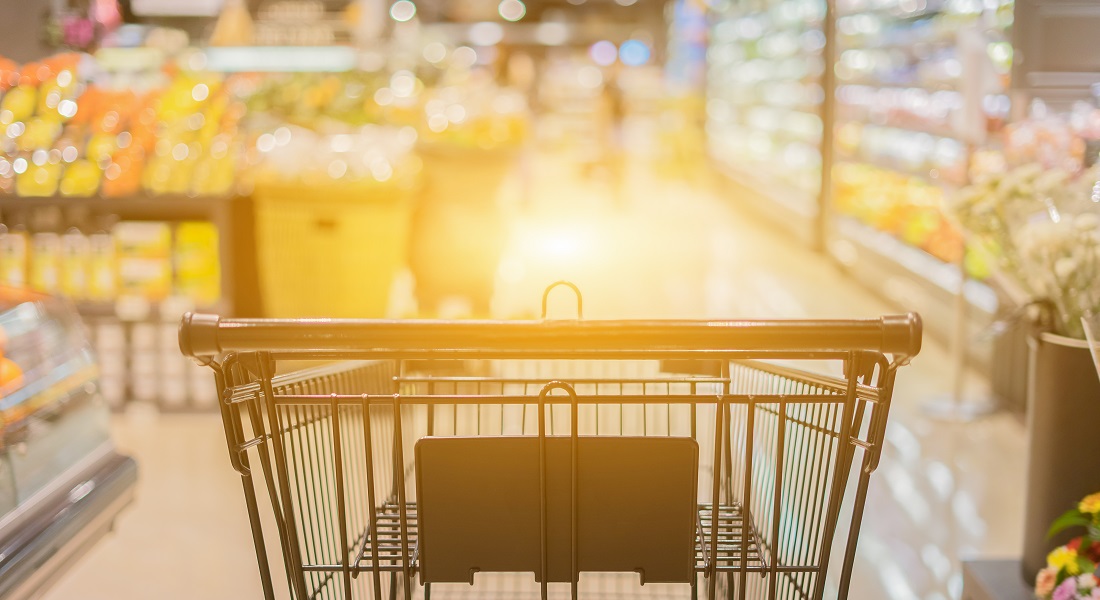Why the food crisis will pass
Even though the food crisis triggered by the war in Ukraine is now causing acute problems, there is no reason for panic, according to University of Copenhagen food economist Henning Otte Hansen. High food prices will not last because the agricultural sector is equipped to ramp up production and stabilize markets.

News of rising food prices has been in the headlines over recent weeks. However, while the food crisis triggered by the war in Ukraine is beginning to sting, and hurting developing countries in particular, there is no reason to panic, according to University of Copenhagen food economist Henning Otte Hansen.
"A great many people are having a tough time right now. But I do not believe that we are dealing with a paradigm shift and permanent new conditions – this is a temporary price bubble, and broadly comparable to previous historical experience," states Henning Otte Hansen, a senior advisor at UCPH’s Department of Food and Resource Economics.
Several food crises have occurred over the past century – including in relation to the Korean War during the 1950s, after the oil crisis in the 1970s, in 2007 and again in 2010. Henning Otte Hansen points out that even though these crises were triggered by different events, the pattern is the same.
"Food crises usually have 1-3-year price bubbles. It's rare that they last longer. Most recently, the 2010 food crisis was triggered by drought in Russia, Ukraine and Kazakhstan. As a result, prices rose by 40-50%. The bubble lasted for one year, until farmers elsewhere ramped up their production."
The market self regulates
The agricultural sector’s ability to ramp up production is the reason why food prices will retreat once again:
"As farmers worldwide can now fetch a high price for their agricultural commodities, they will start producing more by, for example, expanding the amount of area for grain cultivation or through more intensive cultivation. This mechanism is a kind of guarantor that we will never have persistently high agricultural commodity prices. In the longer term, the market tends to self regulate. Of course, there is an adjustment period, but this could take place within a year," says Henning Otte Hansen and continues:
"As such, one shouldn’t begin making long-range panic actions, such as scaling back on environmental adaptations or taking agricultural land out of production, if the purpose is to solve the current food crisis. This would not be an optimal solution."

However, the overall situation and course of the war in Ukraine could make this crisis last a little longer than the previous one, according to the food economist:
"Sanctions against Russia could be maintained for quite some time. And since we were already at the beginning of a food crisis and entering a period of high energy prices, it may take the bubble a bit longer to burst. Energy and grain prices are closely correlated. Furthermore, surging fertilizer prices could postpone an increase in agricultural production."
Nevertheless, in the slightly longer term, his assessment is that the governing trends will limit the duration and scope of the crisis:
"It's easier to predict 10 years ahead than 30 days. But the fundamental megatrends in the agricultural sector are quite predictable – they have prevailed for the past 100 years and will continue. All in all, agriculture is fundamentally quite sound," says Henning Otte Hansen and elaborates:
"There are about 30 conditions that affect grain prices. Then there are a handful of possible 'game changers', with war being one of them. But in the big picture, game changers are ripples. The underlying, supporting forces are still there: Farmers produce more year after year, achieve higher yields, breed better grains and have better technology."
Larger grain stocks are a good idea
Henning Otte Hansen suggests that it would be a good idea to build up slightly larger global grain stocks under the auspices of the UN. Grain stocks are currently able to cover about two months of consumption, as they have been depleted over the past few years.
"Grain stocks can be a welcome buffer in situations like this. We can see that whenever grain stocks are limited, foodstuff prices are higher So, larger grain stocks can stabilize the market. Whenever there are poor harvests, you can sell from the stocks," says Henning Otte Hansen.
Budget for it
The overall assessment of the crisis does not mean that acute problems, such as those now being faced by urban populations in developing countries should be downplayed. Hansen emphasizes:
"In many low-income countries, people spend a much larger share of their budget on food than we do in our part of the world. Some form of relief may be necessary. Even in Denmark, certain vulnerable groups will be hit harder than most – and politically considerations could be made for providing some type of support," says Henning Otte Hansen, who continues:
"But for the average Dane, who only spends about 10% of their income on food, it is probably better to budget for it by, for example, saving on expenses that could be postponed, buying more discount goods and limiting food waste".
Contact
Henning Otte Hansen
Senior Advisor
Department of Food and Resource Economics
University of Copenhagen
hoh@ifro.ku.dk
+45 35 33 34 32 / +45 30 61 22 87
Maria Hornbek
Journalist
Faculty of Science
University of Copenhagen
maho@science.ku.dk
+45 22 95 42 83
